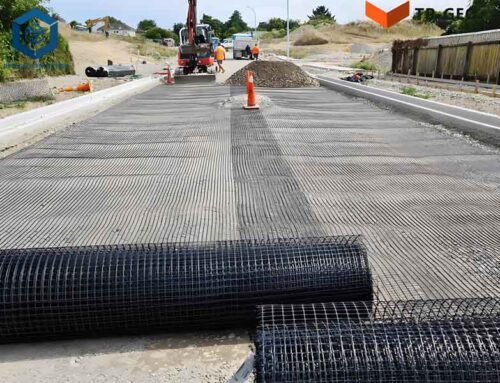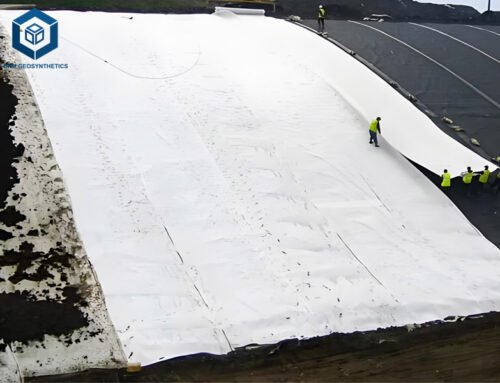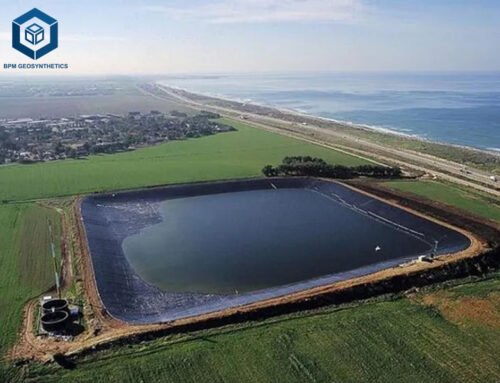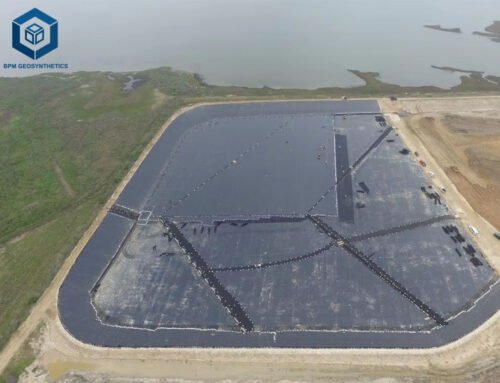In the vast and evolving landscape of civil engineering, geosynthetics have emerged as essential materials for optimizing ground performance, enhancing stability, and addressing complex geotechnical challenges. These synthetic products, designed to interact with soil, rock, or earth, offer versatile solutions that often surpass traditional construction methods in efficiency, cost-effectiveness, and environmental sustainability. Among the myriad of geosynthetics, geotextiles and geocells are two widely recognized and utilized materials, each playing distinct yet complementary roles in various ground improvement applications.
While both geotextiles and geocells contribute significantly to modern infrastructure projects, their fundamental designs, primary functions, and mechanisms of action are markedly different. A nuanced understanding of these distinctions is critical for engineers, designers, and project managers to specify the most appropriate material for specific project requirements, ensuring optimal performance and long-term durability. This comprehensive guide will delve deep into the characteristics, capabilities, and optimal uses of geotextiles and geocells, providing detailed, data-driven insights to facilitate informed decision-making in geotechnical design and construction.
1. What is a Geotextile?
A geotextile is a permeable textile material used in conjunction with soil, rock, or earth as an integral part of a civil engineering project. Unlike impermeable geomembranes, geotextiles are designed to allow fluids (water and gas) to pass through them, performing a range of critical functions including separation, filtration, drainage, and protection. They are essentially flexible, fabric-like sheets made from synthetic polymers such as polypropylene (PP) or polyester (PET), chosen for their resistance to biological degradation, chemicals, and UV exposure.
The introduction of geotextiles revolutionized soil management in construction, offering versatile and cost-effective solutions for improving ground conditions. They provide a simple yet effective way to prevent the intermixing of dissimilar soil layers, manage water flow, and enhance the stability of various earth structures.
Types of Geotextiles:
Geotextiles are broadly categorized based on their manufacturing process, which directly influences their physical properties and primary functions:
- Woven Geotextiles:Produced by interlacing two sets of parallel strands (yarns or slit films) at right angles, creating a stable, uniform fabric.
- Characteristics:High tensile strength at low elongation (typically 15-25% at break). They have relatively uniform opening sizes (Percent Open Area – POA) and are known for their ability to spread loads, resist clogging, and provide excellent separation. Woven geotextiles can achieve tensile strengths ranging from 20 kN/m to over 320 kN/m for specialized, high-strength applications.
- Typical Applications:Roadway stabilization, railway track beds, and as a separation layer beneath riprap or aggregate in heavy-duty applications where high strength and good load distribution are required.
- Nonwoven Geotextiles:Manufactured by bonding fibers together through needle-punching, heat bonding, or chemical bonding. This results in a random fiber orientation and a more irregular, porous structure.
- Characteristics:High permeability, excellent filtration and drainage capabilities, good puncture resistance, and higher elongation (typically 50-100% at break) compared to woven types. They are generally softer and more flexible, conforming well to irregular surfaces. Nonwoven geotextiles typically have tensile strengths ranging from 10 kN/m to 100 kN/m.
- Typical Applications:Drainage systems (e.g., French drains, retaining wall drainage), filtration for erosion control, separation layers in less heavily loaded applications, and as a protective layer for geomembranes (e.g., in landfills or ponds).
- Knitted Geotextiles:Less common, made by interlocking a series of loops of yarn, often used for specific reinforcement or composite applications.
Key Properties and Specifications of Geotextiles:
The performance of a geotextile is quantified through several mechanical, hydraulic, and durability properties, typically evaluated according to ASTM or ISO standards:
- Tensile Strength (kN/m or lbs/in):The maximum load a geotextile can withstand before breaking. Measured by Grab Tensile (ASTM D4632) or Wide Width Tensile (ASTM D4595). Values vary widely by type and grade, from 10 kN/m for light nonwovens to 320+ kN/m for heavy woven types.
- Elongation at Break (%):The percentage increase in length at the point of rupture. Nonwovens typically exhibit high elongation (e.g., >50%), while wovens have lower elongation (e.g., <25%), indicating their stiffness.
- Permittivity (sec⁻¹):A measure of how easily water flows perpendicularly through the geotextile. Crucial for filtration and drainage. ASTM D4491 is the standard. Typical values range from 0.05 to 2.0 sec⁻¹. Higher permittivity means faster water flow.
- Apparent Opening Size (AOS) or O₉₅ (mm or µm):The equivalent diameter of the smallest glass beads that can pass through the geotextile. This defines the filtration capability, ensuring soil particles are retained while allowing water passage. ASTM D4751. Typical values for filtration range from 75 µm to 600 µm.
- Puncture Resistance (N or lbs):The geotextile’s ability to resist damage from localized forces (e.g., sharp aggregate). Measured by CBR Puncture (ASTM D6241) or Cone Drop (ASTM D4833). Values from 150 lbs to over 800 lbs.
- Transmissivity (m²/sec):For in-plane drainage, measures the rate at which water flows within the plane of the geotextile under a hydraulic gradient. ASTM D4716.
- Mass Per Unit Area (g/m² or oz/yd²):Also known as grammage or weight, often correlated with general robustness. ASTM D5261.
- UV Resistance:Stability under prolonged exposure to ultraviolet radiation, crucial for exposed applications. Carbon black content is often used for this. ASTM D4355 measures retention of tensile strength after UV exposure.
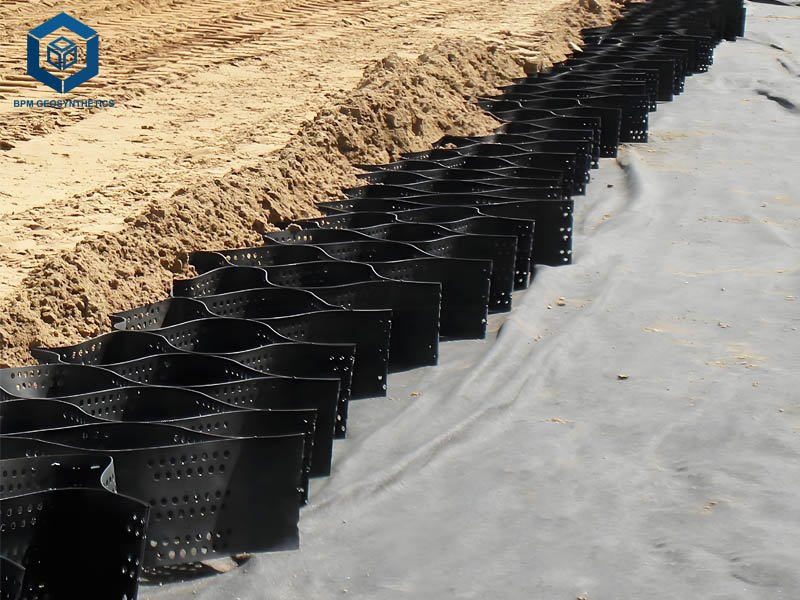
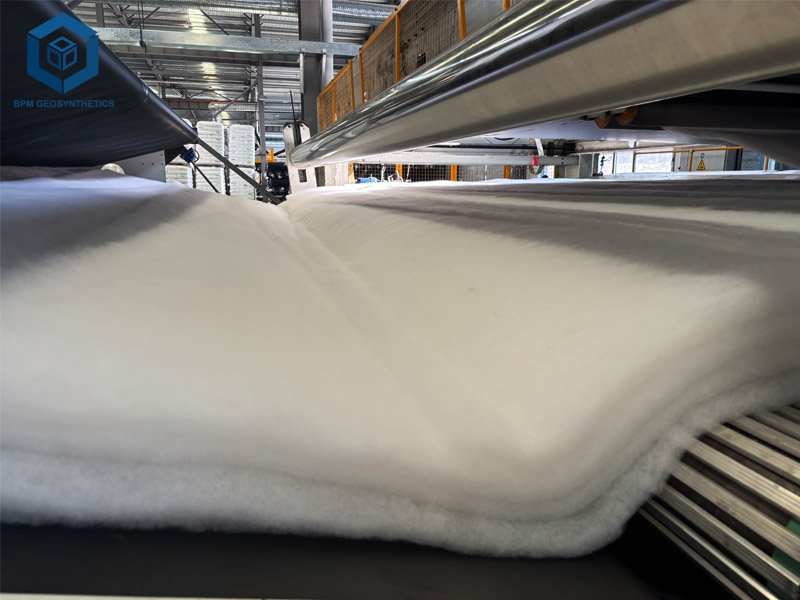
2. What is a Geocell?
A geocell, or cellular confinement system (CCS), is a three-dimensional, honeycomb-like structure made from strips of polymeric material (most commonly HDPE) that are ultrasonically welded together at discrete intervals. When expanded on site, these strips form a robust cellular matrix that can be filled with various infill materials such as soil, aggregate, concrete, or recycled materials. The core function of a geocell is confinement and stabilization of these infill materials, thereby enhancing their load-bearing capacity and resistance to erosive forces.
Geocell technology was pioneered by the U.S. Army Corps of Engineers and commercialized in the late 1970s. Its innovative design allows for the transformation of relatively weak, unconsolidated infill into a stiff, stable mattress or slab, providing significant improvements in soil performance for a range of geotechnical applications.
Types of Geocells:
Geocells are primarily distinguished by their manufacturing process, cell geometry, and wall perforation:
- Perforated Geocells:The most common type, featuring small holes or perforations on the cell walls.
- Characteristics:These perforations allow for lateral drainage of water within the cellular system and facilitate root penetration when vegetated, promoting better biological integration and long-term stability in vegetated slope applications. They also enhance frictional interlock with the infill.
- Typical Applications:Vegetated slope stabilization, permeable pavement systems, and applications where internal drainage within the cell structure is beneficial.
- Non-Perforated Geocells:Designed with solid cell walls.
- Characteristics:Used where fluid containment within the cells is desired (e.g., for containing concrete) or where the structural integrity of the cell wall without through-wall drainage is paramount.
- Typical Applications:Certain types of channel lining where high fluid flow might be present, or for specific concrete infill applications.
- Textured vs. Smooth Geocells:Some geocells have textured (roughened) surfaces on their cell walls, which increases the frictional resistance and interlock between the geocell and the infill material, further enhancing load transfer and stability. Smooth-walled geocells are used in specific applications or where internal friction is less critical.
- Cell Height and Section Length:Geocells are manufactured in various cell heights (e.g., 50 mm, 75 mm, 100 mm, 150 mm, 200 mm, 250 mm) and section lengths to accommodate different load requirements, slope gradients, and design depths. Taller cells generally provide greater confinement and are suitable for heavier loads or steeper slopes.
Key Properties and Specifications of Geocells:
The performance of a geocell system is a function of both the geocell material properties and its interaction with the infill:
- Panel Material (typically HDPE):Properties include density (e.g., 0.935-0.965 g/cm³ per ASTM D1505), tensile strength of the sheet (e.g., 20-30 MPa), and environmental stress crack resistance (ESCR, ASTM D1693, >400 hours), which indicates resistance to cracking under sustained stress. Carbon black content (typically 1.5-2.0% per ASTM D1603) ensures UV resistance.
- Weld Strength (kN/m or lbs/in):The strength of the ultrasonic welds connecting the individual strips. This is paramount for the integrity and load-bearing capacity of the cellular matrix. ASTM D5721 (Weld Shear Strength) and ASTM D6392 (Peel Strength) are common tests. Weld strength is typically 70-80% of the sheet’s tensile strength.
- Cell Height (mm):The vertical dimension of the individual cells, directly impacting the degree of confinement and the depth of the confined layer.
- Aperture Opening/Cell Size:The dimensions of the individual cells when fully expanded. Smaller cell sizes provide greater confinement for finer infill materials, while larger cells accommodate coarser aggregates.
- Perforation Rate (%):For perforated geocells, the percentage of the cell wall surface that is perforated, impacting drainage and root interlock.
- Modulus Improvement Factor (MIF):A crucial performance metric for load support applications. It indicates how much the geocell system increases the elastic modulus (stiffness) of the infill material compared to its unconfined state. MIF values can range from 3 to 10 or more, leading to significantly enhanced bearing capacity and reduced deformation.
- Infill Material Properties:The type, density, and gradation of the infill material (e.g., sand, gravel, topsoil, concrete) are critical design parameters that define the overall performance of the geocell system.
3. What Are Similarities of Geotextile and Geocell?
Despite their primary functional differences, geotextiles and geocells share several fundamental characteristics that classify them under the umbrella of “geosynthetics” and contribute to their widespread utility in civil engineering.
- Polymeric Composition:Both geotextiles and geocells are predominantly manufactured from synthetic polymers, primarily polypropylene (PP) and high-density polyethylene (HDPE). These polymers are selected for their excellent resistance to biological degradation (e.g., rot, mildew, insects), chemical attack (from common soil acids, alkalis, and salts), and environmental aging processes. This synthetic nature ensures long-term performance and durability in buried applications.
- Application in Ground Improvement:Both geosynthetics are engineered solutions deployed to enhance the performance and stability of soil and earth structures. They actively interact with geotechnical materials to improve their mechanical and hydraulic properties, leading to more stable, durable, and cost-effective construction.
- Durability and Environmental Resistance:Both geotextiles and geocells are designed for long service lives, often exceeding the design life of the structures they support (e.g., 50-100+ years). Their inherent resistance to environmental degradation factors, including UV radiation (when properly stabilized with carbon black for exposed applications), environmental stress cracking, and common soil chemistry, ensures they retain their integrity for extended periods in buried conditions.
- Contribution to Sustainable Construction:By optimizing the use of local, readily available infill materials (in the case of geocells) or preventing the need for expensive imported aggregates (for both), they contribute to more sustainable construction practices. They can minimize excavation and disposal of unsuitable soils, reduce the overall carbon footprint of a project by decreasing material transport, and allow for the utilization of marginal lands.
- Industry Standards and Quality Control:The geosynthetics industry is supported by a robust framework of national and international standards. Organizations like ASTM International, ISO, and the Geosynthetic Institute (GRI) provide critical testing methods and specifications that govern the manufacturing and application of both geotextiles and geocells. These standards (e.g., ASTM D4632 for geotextile tensile strength, ASTM D4491 for geotextile permittivity; ASTM D5721 for geocell weld strength) ensure consistent product quality, predictable performance, and enable engineers to confidently specify materials.
4. What Are Differences of Geotextile vs Geocell?
The core distinctions between geotextiles and geocells lie in their primary functional mechanisms, their physical structures, and consequently, their optimal applications in civil engineering.
4.1 Differences of Geotextile vs Geocell – Primary Function and Mechanism:
- Geotextile: Separation, Filtration, Drainage, Protection
- Mechanism:Geotextiles are permeable fabrics that prevent particle migration while allowing fluid flow.
- Separation:They create a physical barrier between dissimilar soil layers (e.g., fine subgrade soil and coarse aggregate base), preventing intermixing and maintaining the structural and drainage integrity of each layer.
- Filtration:They retain soil particles while allowing water to pass, preventing clogging of drainage systems or erosion.
- Drainage:They can collect and convey water within their plane (transmissivity) or allow water to pass perpendicularly (permittivity), facilitating the removal of excess moisture.
- Protection:They cushion and protect other geosynthetics (like geomembranes) from puncture or abrasion.
- Geocell: Confinement and Stabilization
- Mechanism:Geocells provide three-dimensional confinement to infill materials. The interconnected cellular structure restrains the lateral movement of soil or aggregate particles, increasing their shear strength, stiffness, and overall load-bearing capacity. This mechanism converts low-strength infill into a robust, semi-rigid composite mattress or slab, effectively distributing applied loads over a wider area and reducing stress on the underlying subgrade.
4.2 Differences of Geotextile vs Geocell – Physical Structure and Form:
- Geotextile:
- Structure:A flat, planar (2D) fabric, either woven or nonwoven, supplied in rolls. It has a continuous surface with small pores or apertures.
- Apertures/Openings:Micrometer-sized pores designed for filtration and separation, preventing particle migration while allowing water passage.
- Geocell:
- Structure:A three-dimensional, expandable, honeycomb-like cellular matrix. It is supplied in a collapsed, folded form for transport and expands into a distinct 3D cellular structure on-site.
- Apertures/Openings:Large, defined cell openings (typically 100-300 mm in diameter) that are designed to be filled with granular or cohesive infill materials.
4.3 Differences of Geotextile vs Geocell – Permeability and Drainage Characteristics:
- Geotextile:
- Permeability:Fundamentally permeable. They are designed to allow water to pass through their plane (permittivity) and/or along their plane (transmissivity). Crucial for filtration and drainage applications.
- Geocell:
- Permeability:The individual cell walls are typically impermeable (HDPE). However, the overall geocell system (with infill) is permeable, as water can drain through the infill material. Perforated geocells allow for additional through-wall drainage, further enhancing the system’s permeability. Geocells do not primarily serve as filtration media in the same way geotextiles do.
4.4 Differences of Geotextile vs Geocell – Reinforcement vs. Confinement:
- Geotextile:
- Reinforcement:Some high-strength woven geotextiles can provide reinforcement by absorbing tensile stresses in the soil (similar to a geogrid, but typically with higher strain requirements). However, this is one of its multiple functions and usually involves frictional interaction with soil.
- Geocell:
- Confinement:Its primary mechanism is confinement. It enhances the stiffness and shear strength of the infill material by preventing lateral spreading. This confinement leads to a significant increase in the apparent cohesion and bearing capacity of the soil. The Modulus Improvement Factor (MIF) illustrates this, showing several-fold increases in stiffness of the confined soil layer.
4.5 Differences of Geotextile vs Geocell – Key Applications:
- Geotextile Applications:
- Separation:Preventing intermixing of dissimilar soil layers (e.g., aggregate base from soft subgrade in roads and railways, under foundations).
- Filtration:Protecting drainage systems (e.g., trench drains, subsurface drains, behind retaining walls) from clogging by fine soil particles.
- Drainage:Facilitating the removal of excess pore water pressure in various geotechnical structures (e.g., behind retaining walls, under embankments).
- Protection:Cushioning and protecting geomembranes from punctures or abrasions.
- Erosion Control:Acting as a filter layer under riprap, gabions, or concrete revetments to prevent soil loss on slopes and shorelines.
- Geocell Applications:
- Load Support/Base Stabilization:Stabilizing granular bases for unpaved roads, access roads, railways, parking lots, and heavy load platforms over soft subgrades. Increases the effective bearing capacity and reduces rutting and settlement.
- Slope Stabilization:Erosion control and long-term stability of steep slopes, embankments, and landfill covers, by confining topsoil and promoting vegetation.
- Channel Protection:Lining of drainage channels, ditches, and spillways to resist erosive forces, often filled with aggregate or concrete.
- Retaining Walls:Constructing gravity retaining walls and steepened slopes with vegetated or aggregate-filled geocell facing.
- Tree Root Protection:Protecting tree root zones from compaction in urban development.
4.6 Differences of Geotextile vs Geocell – Installation Methods and Requirements:
- Geotextile Installation:
- Site Prep:Requires a relatively smooth, clean surface, free of large sharp objects.
- Deployment:Rolls are unrolled directly onto the prepared subgrade.
- Overlap/Seaming:Panels are typically overlapped (e.g., 300-600mm, depending on soil conditions and strength requirements) or sometimes sewn/heat-bonded for critical applications.
- Simplicity:Generally simpler and faster to install than geocells, requiring less specialized equipment.
- Geocell Installation:
- Site Prep:Requires subgrade preparation, possibly with a geotextile separator placed underneath to prevent infill loss into very soft subgrades.
- Deployment:Geocell panels, supplied in a collapsed form, are expanded into their 3D honeycomb structure.
- Anchoring:Secured to the ground using rebar stakes, pins, or deadman anchors to maintain expansion and resist movement, especially on slopes.
- Infill:Cells are filled with the chosen infill material (e.g., soil, gravel, concrete) and compacted, typically using hand tools or light machinery.
- Complexity:More involved installation process than geotextiles due to the 3D expansion, anchoring, and infilling steps.
4.7 Differences of Geotextile vs Geocell – Cost Implications:
- Geotextile Cost:Generally more economical per square meter (e.g., nonwoven geotextiles from $0.15-$0.50/ft², woven from $0.30-$0.70/ft²) compared to geocells, especially for basic separation and filtration functions. Their cost-effectiveness lies in preventing material intermixing and ensuring long-term drainage efficiency.
- Geocell Cost:The initial material cost per square meter for geocells can be higher than most geotextiles. However, the overall project cost savings can be significant. Geocells can reduce the required thickness of expensive aggregate base layers by 30-50% (e.g., in roads), minimizing material import and transportation costs. The cost of infill material and its placement must also be factored in. While material cost can be higher, the value delivered through superior performance often justifies the investment.
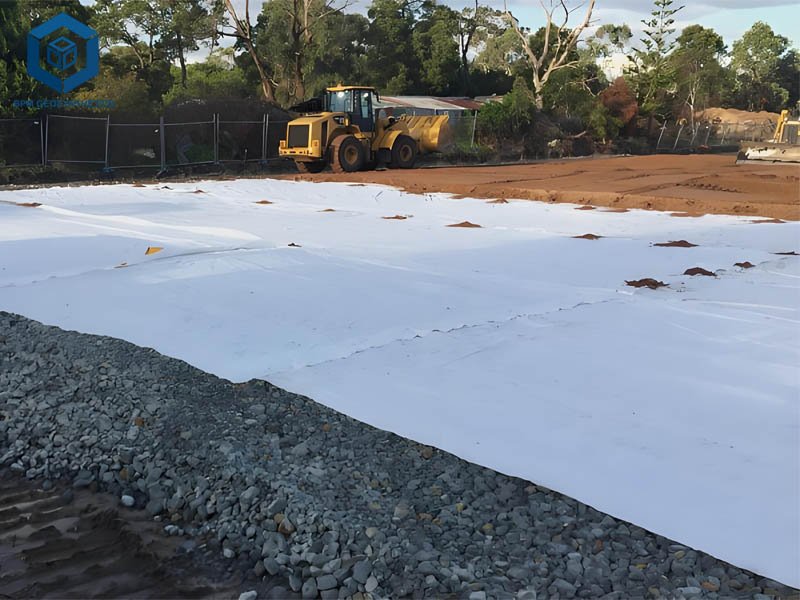
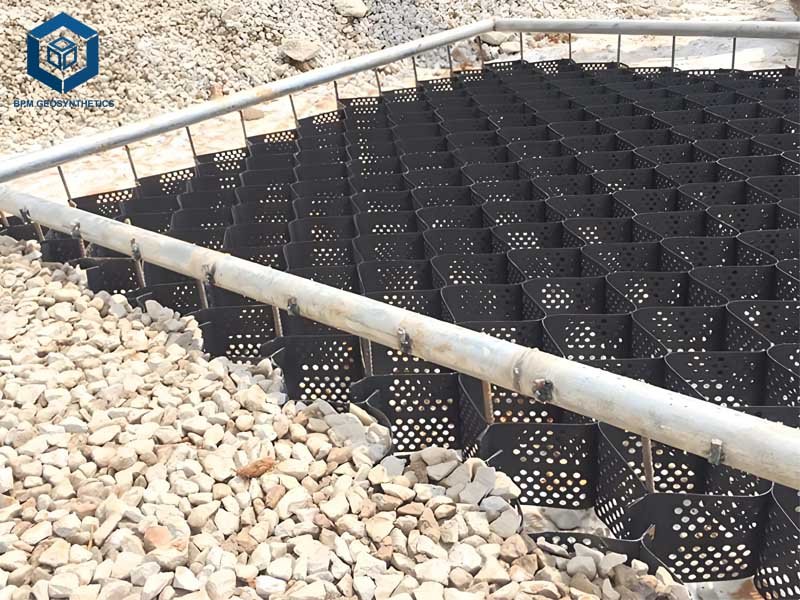
5. What Are Considerations When Choosing Between Geotextile vs Geocell?
The decision-making process for selecting between geotextiles and geocells hinges on a thorough evaluation of project-specific objectives, site conditions, and desired long-term performance.
Project Objective and Required Function:
- Water Management (Filtration/Drainage/Separation):If the primary goal is to prevent the intermixing of soil layers, filter fine particles from water flow, or facilitate drainage, a geotextile is the appropriate choice.
- Load Support/Erosion Control/Confinement:If the objective is to enhance the load-bearing capacity of a soil layer, stabilize a steep slope against erosion, or contain an infill material within a structured matrix, a geocell system is the most effective solution.
- Site Conditions and Soil Type:
- Weak/Soft Subgrade:For very weak or problematic subgrades, both can be beneficial. A geotextile provides separation and limited tensile reinforcement to prevent contamination of the base. A geocell provides superior confinement and stiffness, significantly improving the bearing capacity and reducing required aggregate thickness, especially for heavy loads.
- Cohesive vs. Granular Soil:Geotextiles are versatile across soil types for separation/filtration. Geocells perform best with granular infill for load support due to mechanical interlock, but can be filled with cohesive soil for vegetated slopes.
- Infill Material Availability and Properties:
- Geocell Specific:The performance of a geocell system is highly dependent on the infill material. The choice of aggregate, sand, or topsoil dictates the geocell’s effectiveness. Using locally available, even marginal, materials with geocells can lead to substantial cost savings.
- Geotextile Consideration:For geotextiles, the gradation of adjacent soils is critical for filter design (AOS must be compatible with soil gradation to prevent clogging or piping).
- Load and Stress Conditions:
- Distributed Loads/Bearing Capacity:For applications requiring significant improvement in load distribution and bearing capacity (e.g., heavy traffic roads, platforms), geocells offer superior performance due to their 3D confinement mechanism.
- Tension/Friction:For tensile reinforcement in certain applications or for frictional resistance against sliding, specific grades of geotextiles (especially woven) can be effective.
- Design Life and Environmental Factors:
- Both are designed for long design lives. For exposed applications, ensure adequate UV resistance (carbon black content is key). For buried applications, resistance to chemicals and biological degradation is critical, which both PP and HDPE materials provide.
- Drainage requirements(especially for slopes or roadways) will push towards perforated geocells and permeable geotextiles.
6. Conclusion
The comparative analysis of geotextiles and geocells underscores their distinct yet equally vital roles in modern civil engineering. Geotextiles, with their planar fabric structure, are the workhorses of separation, filtration, drainage, and protection, essential for maintaining material integrity and managing subsurface water. Geocells, characterized by their expandable, three-dimensional cellular matrix, excel at confinement and stabilization, effectively transforming weak infill into robust, load-bearing composite structures and providing superior erosion control.
The choice between a geotextile and a geocell is dictated by the specific function required to solve a geotechnical problem. They are not interchangeable; rather, they are often complementary. For instance, in a road construction project over a soft subgrade, a geotextile might first be used for separation and subgrade protection, followed by a geocell layer to reinforce and stabilize the aggregate base, thereby optimizing the entire pavement structure. This synergistic approach, where the unique strengths of different geosynthetics are combined, allows engineers to create more resilient, efficient, and cost-effective solutions for the diverse challenges of ground improvement. Understanding these precise distinctions, supported by technical specifications and real-world performance data, is key to unlocking the full potential of geosynthetic materials in building the infrastructure of tomorrow.
Any questions or inquiries, please contact BPM Geosynthetics.

